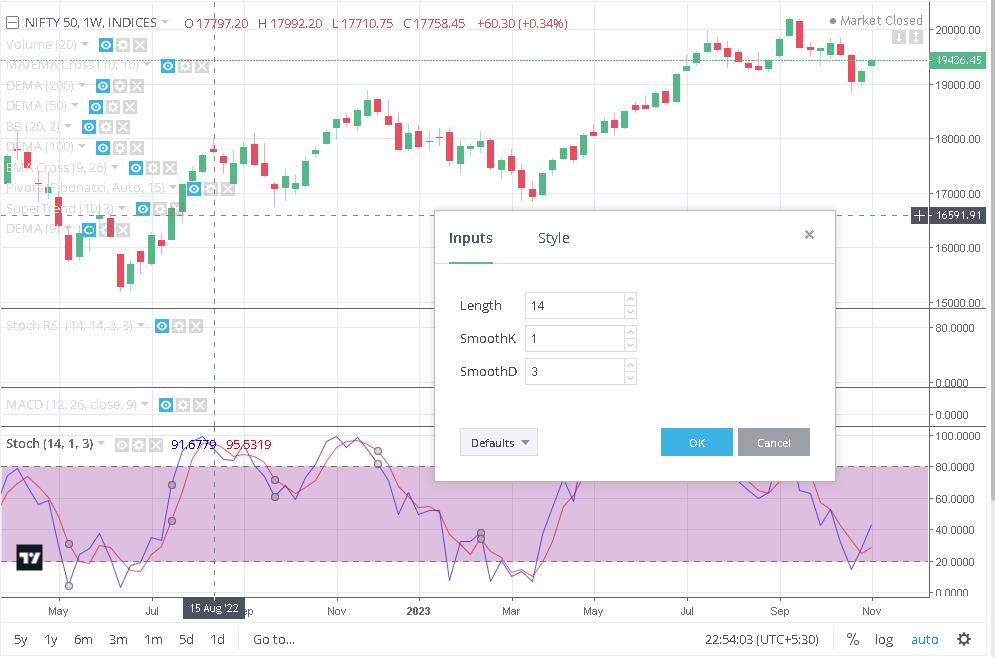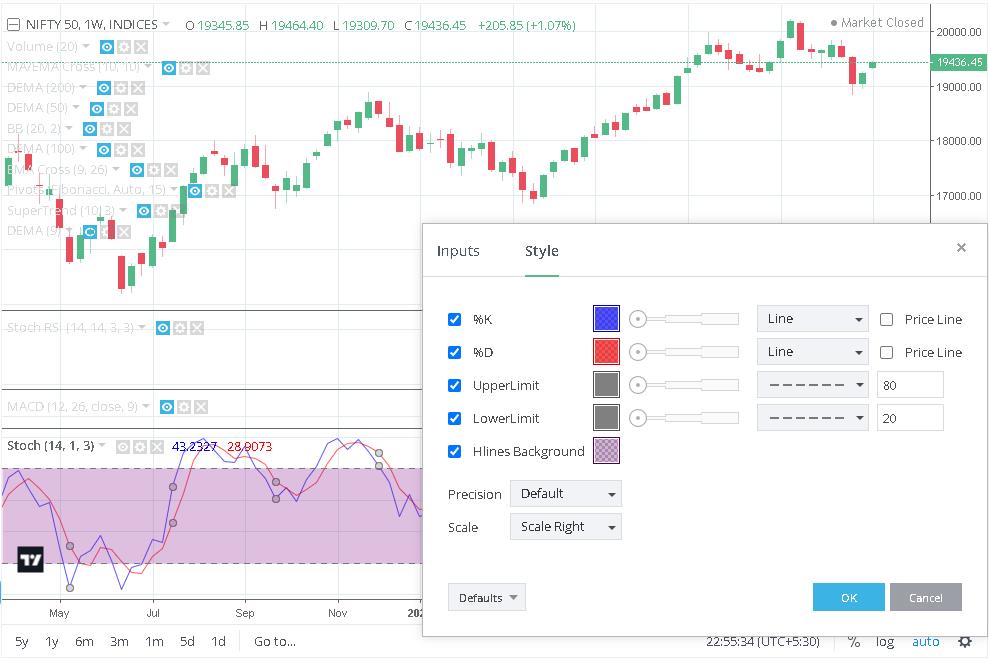In the world of trading, the ability to identify optimal entry and exit points is the cornerstone of success. The Stochastic Oscillator indicator is a potent tool in a trader’s toolkit, offering insights into potential trade opportunities. In this comprehensive guide, we will delve into how to utilize the Stochastic Oscillator effectively to extract entry and exit price points with precision and confidence.
1. Demystifying the Stochastic Oscillator
Stochastic Oscillator, Momentum Oscillator, Trading Tool
The Stochastic Oscillator is a dynamic momentum indicator that evaluates the speed and strength of price movements. Traders frequently use it to identify overbought and oversold market conditions, making it an invaluable asset for developing entry and exit strategies.

2. Selecting the Right Stochastic Oscillator Parameters
Stochastic Oscillator Parameters, Indicator Settings, Customization
To harness the full potential of the Stochastic Oscillator, it’s essential to choose the right parameters. The standard settings involve a 14-period lookback, but customization is key to aligning the indicator with your trading strategy and timeframe. The conventional levels for overbought and oversold conditions are 80 and 20, respectively, though these can be adjusted as needed.


3. Mastering Entry Points with Stochastic Oscillator
Entry Points, Trading Signals, Stochastic Crossovers
Effective entry points lay the foundation for successful trading. Here’s how to utilize the Stochastic Oscillator to identify entry opportunities:
- Overbought/Oversold Conditions: The Stochastic Oscillator signals overbought conditions when it rises above 80 and oversold conditions when it falls below 20. Look for potential entry points when the Stochastic Oscillator crosses into these extreme levels, suggesting an impending reversal in price direction.
- Stochastic Crossovers: Pay close attention to the crossovers between the %K (fast line) and the %D (slow line) of the Stochastic Oscillator. When the %K crosses above the %D, it often signifies a bullish signal and may present a potential entry point for a long trade. Conversely, when the %K crosses below the %D, it may be a bearish signal, indicating a potential entry point for a short trade.
- Stochastic Divergence and Convergence: Observe the Stochastic Oscillator for instances of divergence and convergence with the price. Bullish divergence, where the Stochastic Oscillator forms higher lows while the price forms lower lows, can signal a potential entry for a long trade. Conversely, bearish divergence, where the Stochastic Oscillator makes lower highs while the price forms higher highs, may suggest an entry for a short trade.
4. Navigating Exit Points with Stochastic Oscillator
Exit Points, Profit Booking, Stochastic Reversals
Effective exit points are vital for securing profits and managing risk:
- Crossing Back into the Neutral Range: To identify exit points, watch for the Stochastic Oscillator crossing back into the neutral range, which falls between 20 and 80. For instance, if you’re in a long trade and the Stochastic Oscillator crosses from above 80 back below it, it may signal an exit point. In contrast, for a short trade, an exit signal may be triggered when the Stochastic Oscillator crosses from below 20 back above it.
- Trend Reversal Confirmation: The Stochastic Oscillator can also confirm trend reversals. If the %K starts crossing above the %D after being below it, it may signal an exit from a short trade and a potential entry into a long trade, indicating a trend reversal.
- Using Other Technical Indicators: Consider utilizing the Stochastic Oscillator in conjunction with other technical indicators or chart patterns to validate exit points. For example, if the Stochastic Oscillator suggests overbought conditions but a bearish reversal pattern appears on the price chart, it may provide a strong signal to exit a long trade or enter a short trade.
5. Combining Stochastic Oscillator with Other Indicators
Indicator Combinations, Trading Strategy, Precision
While the Stochastic Oscillator is a powerful tool on its own, combining it with other technical indicators can enhance the precision of your entry and exit points. Develop a well-rounded trading strategy by integrating various technical indicators that complement one another.
6. Practice, Backtesting, and Risk Management
Trading Practice, Backtesting, Risk Management
Before implementing your Stochastic Oscillator-based strategies in live trading, practice on historical data and backtest your approaches. Implement risk management measures, such as setting stop-loss and take-profit levels, to safeguard your capital.
Conclusion: Achieving Trading Success with Stochastic Oscillator Precision
Trading Success, Stochastic Oscillator Mastery, Effective Trading Strategies
Mastering the Stochastic Oscillator is a journey that fuses knowledge, practice, and a profound understanding of market dynamics. By selecting the right parameters, fine-tuning your strategies, and applying risk management principles, you can confidently navigate the world of trading and extract entry and exit price points with precision. Happy trading!
